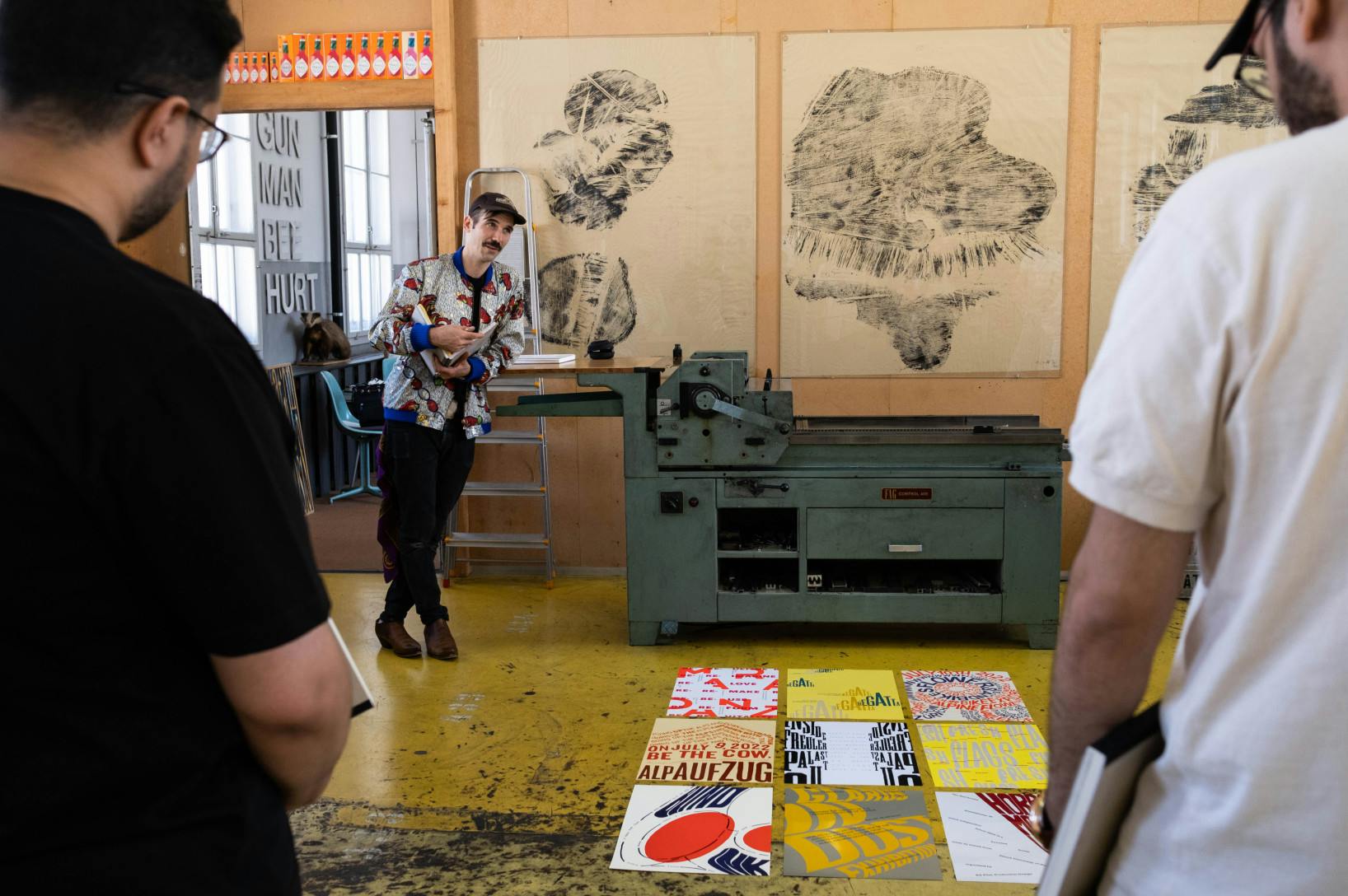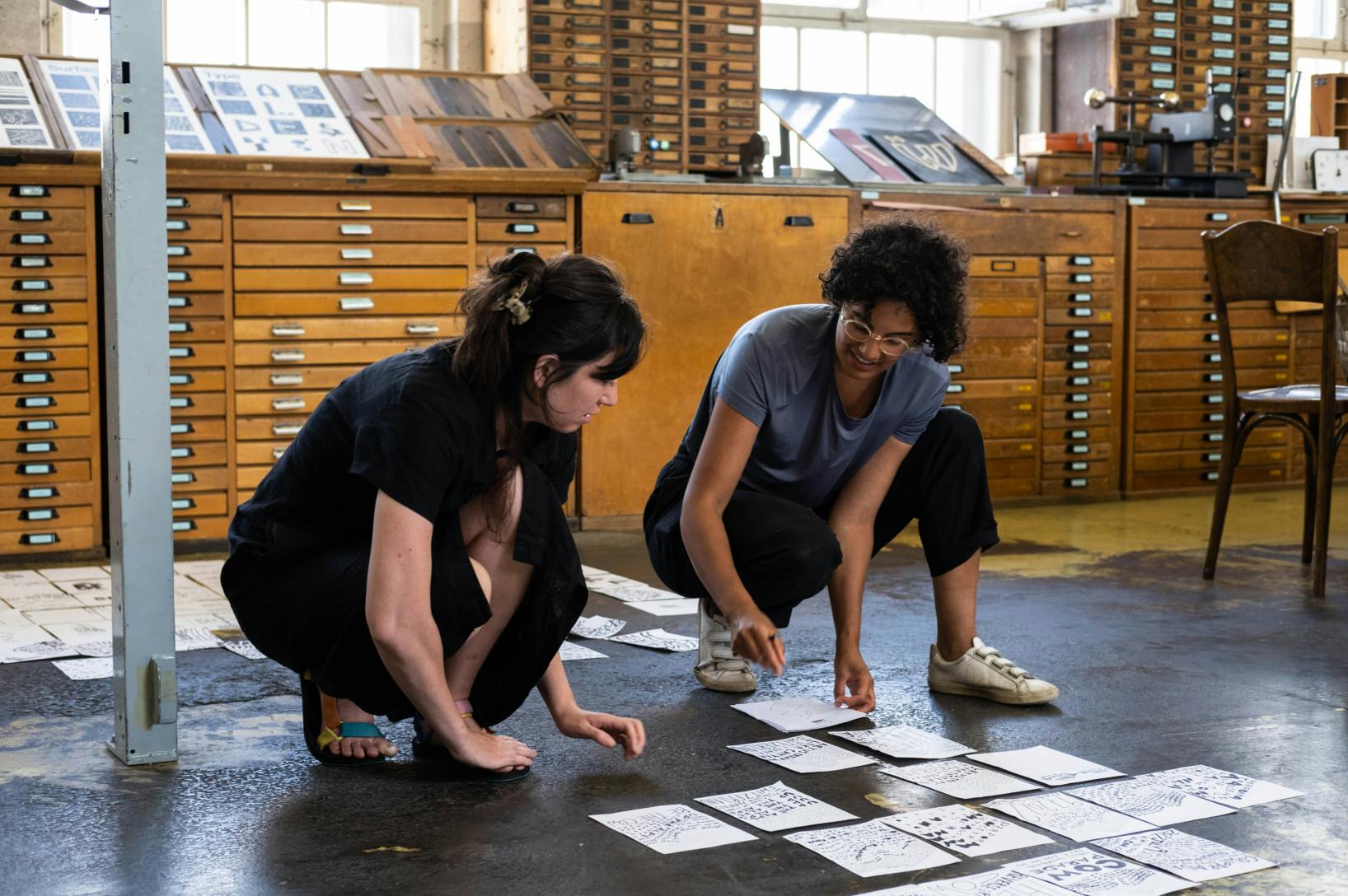Typographic Printing Program doesn’t have a direct sign up process, but is asking for applications. What’s the use for such a process? I’ve asked five questions to Dafi Kühne [DK] about the application process and his vision behind it.
Why is there an application instead of a direct sign up process?
[DK] «For all our sessions ins Switzerland and in Pasadena, there are limited number of spaces. So to makes sure we get a diverse field of great participants, we introduced an application process right from the start TPP in Switzerland in 2016. The goal is to find a broad range of motivated participants. Our sessions are intense, filled up with as much content as we can, therefore we want to make sure that all the participants are motivated and have a profound interest in typography and analog processes. We want to work with a group of diverse backgrounds to have rich discussions and great exchange within the group.»
What does the application need to include?
[DK] «With your application, we are asking for a simple letter of motivation and a CV. The letter of motivation is really just a one-page PDF with 4–5 sentences why you want to participate in the program. It is important for us to see that you are expecting the right things from this workshop and you really want to study typography, poster design and letterpress printing. The CV (Curriculum Vitae) allows you to summarize your education, skills and experience. This second one-page PDF contextualizes your background and helps us to select a broad range of participants.»
Why are you not asking for a portfolio?
[DK] «To participate in our sessions, it is not that relevant what you already know or are able to do. All we need to know if you are motivated to work and learn with us. We have had participants with diverse professional backgrounds, different professional levels and of course different origins and age groups. All our exercises are designed to pick up participants at any level, from very experienced professionals to very young students at the begin of their career. For us it is most important to work with a group of devoted typography nerds (or future typography nerds) that are open for new approaches and willing to learn—and that really includes any entry level.»
Who is looking at the applications?
[DK] «The applications end up on my desk. I am reading through them and if I can, I reply in batches of 3–4 applications. Besides the criteria of motivation, I am trying to select a good diverse group of participants, this includes professional levels, professional backgrounds, gender identities, ages, ethnicities, and nationalities. To make sure this is not just a one-man show, for the sessions in Switzerland, I pass the applications through Julia Marti, who also is co-teaching in the summer sessions to help me select from the field of applications. A second pair of eyes really helps to make a good selection.»
Is it hard to get accepted?
[DK] «As much as the application is an active filter—it much more is a passive one. This means, only those that really want to participate, will submit an application. So if you take the efforts to write a few lines why you want to participate and send us a CV this already proofs your true interest in the workshop. That’s half the battle. The earlier you apply, the more likely it is go get in. Sometimes you might get offered a different session, but we really help you to make your participation possible whenever we can. Don’t get scared off by the application process—it really makes sure you can work with a crazy cool and diverse group of cohorts and type geeks, who all share similar interests… Yay!»

